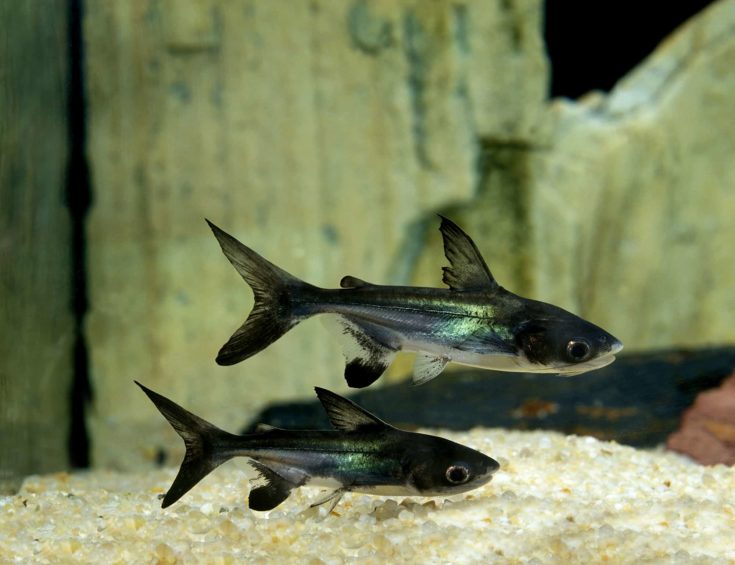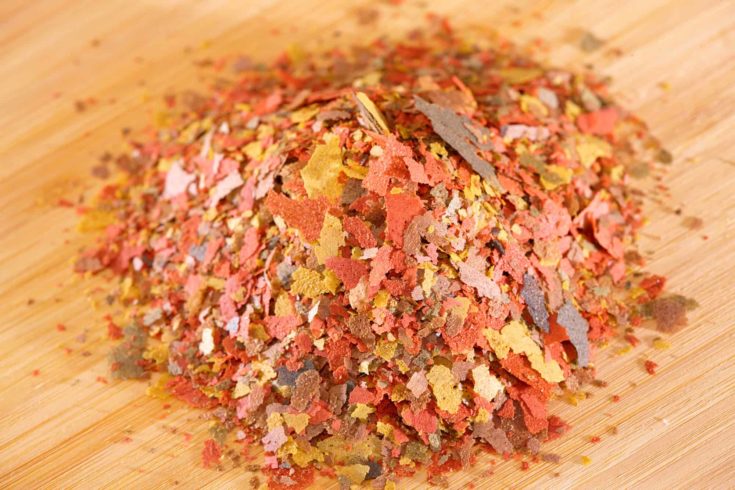How Often to Feed a Small Fish
Feeding your fish a high-quality diet that's appropriate to the needs of the species and in the correct quantities is crucial for the health of your fish.
How much to feed fish is a question that many newbies are confused by, as is how often to feed fish. For example, did you know that you should actually starve your fish for at least one day every week to keep their digestive systems working properly?
Read this guide to find out how much and how often you should feed your pet fish.
What Do Fish Eat?
When it comes to what fish eat, that's a bit like asking, "how long is a piece of string?" Fish diets are many and varied, depending on the species.
Understanding How Fish Eat
In the wild environment, fish eat whenever food is available, and they need to. If the food is plentiful, fish will eat several times every day. However, if food is hard to find, the fish might not eat for several days. For that reason, fish eat whenever they get the chance.
Captive fish will gobble up whatever you feed them, even if they're not especially hungry.
Herbivorous Fish
Herbivorous fish only eat plant material and some species of algae, depending on the season and what plants they can find in their environment.
Generally, herbivores tend to graze and forage throughout the day. That's because herbivorous fish need a lot more plant matter to fulfill their nutritional requirements than meat-eating carnivores do.
Omnivorous Fish
Omnivores have many more food options than herbivores and carnivores do. Since omnivorous fish eat both plant matter and meaty protein, they can usually feed as much and whenever they need to.
Carnivorous Fish

Carnivorous fish feed less frequently than both herbivores and omnivores. That's because, in nature, predatory fish are less likely to catch a meal every day, so their captive feeding regimen should reflect that.
Differences In How Freshwater Fish Eat
As well as their food preferences, the way in which aquarium fish eat determines what kind of foods you need to give them in captivity.

- Some fish, especially wild-caught primarily carnivorous and omnivorous species, won't touch dry flake foods or pellets, preferring a diet of live foods and plant matter. However, you can often wean these fish onto a diet of frozen foods or gels supplemented with blanched veggies.
- Predatory carnivores often need to be fed live food. These fishes will not eat "dead" meat, insisting on a diet including feeder fish, live brine shrimp, bloodworms, and earthworms.
- Very small fish species and juveniles will need food items that they can fit into their mouths. For example, I recently bought three small goldfish. Usually, I feed my large fantail a diet of fancy goldfish pellets supplemented with frozen bloodworms. However, my new fishes were too tiny to eat that, so I temporarily switched to frozen daphnia and goldfish flakes that I could crumble into a powder.
- Some fish, such as bettas, are surface feeders that need floating pellets, whereas others inhabit the bottom of the tank, preferring sinking wafers. Fish that dwell in the middle part of the water column need food that will drift slowly down through the water so that they can grab a morsel before the food reaches the substrate.
How Often Do You Feed Fish?
The frequency of feeding your fish depends on several factors. However, most fish species are fine when fed once or twice per day. No matter how many times a day you feed your fish, keep each feed small.
There are a few exceptions to that general rule:
- Herbivores such as Mollies and Silver Dollars need to eat often, as they have small stomachs that don't hold much food. In the natural world, these fish would spend their days grazing on plant matter and algae. So, give them three or even four small feeds per day, and provide live plants that they can nibble on.
- Goldfish don't have stomachs, so they shouldn't be fed large meals. These opportunistic omnivores spend most of the day grazing on algae and plant matter and foraging through the substrate for scraps of food. So, giving them two or three very small meals per day is the best way to go.
- Young fish and newly hatched fry will need more frequent feedings to provide them with the protein, nutrients, and energy they need for healthy growth.
It's worth noting that small, very active tropical fish species such as tetras and very young fry have a higher metabolic rate than larger fish, especially when the tank temperature is very warm. Fish are cold-blooded creatures, and water temperature is highly influential on how often and how much the fish need to be fed.
What Schedule Should I Keep?
Most fish species do best when offered a varied diet. For example, you might feed your fish high-quality tropical flake food or pellets every day, supplemented by some frozen or live meaty protein or blanched veggies, depending on the species you keep.

You might also want to include a fasting day each week when you don't feed your fish at all. How you schedule that is largely up to you, but it can be helpful to write down what you want to feed your fish on what day to help you remember.
When Is The Best Time To Feed Fish?
The timing of feedings is not critical, but you will find that the fish learn when it's feeding time, rushing eagerly to the surface in anticipation when you approach the tank.
That said, there are a few important things to note:
- In nature, most fish species feed in the morning and evening, while some forage throughout the day, too.
- Turn the aquarium light on for half an hour before feeding and for half an hour afterward. That enables the fish to find the food.
- If you keep nocturnal fish species, such as certain catfish and knifefish, feed them immediately before lights out at night. The fish will continue hunting for their food in the dark, using their sense of smell to locate it.
If you won't be around to feed your fish, invest in an automatic fish feeder that you can set to dispense the food at preset times.
Is Fasting Good For Fish?
Some fish species can benefit from one fasting day per week, especially those that are prone to digestive issues, such as bettas and fancy goldfish. Some large predatory fish only need to eat three or four times a week anyway, so a couple of days without food is actually the best way to manage them.
The exceptions to that are herbivorous fish that need to eat a lot to support their nutritional needs, juveniles, fry, and nano fish that have small stomachs and, therefore, need to eat more frequently.
Number Of Feedings Per Day
As previously mentioned, the number of feedings you give your fish depends on the species that you keep.
Some carnivorous predators only need two or three feeds per week, whereas smaller nano fish, juveniles, and fry should be fed up to three or even four times per day. However, most fish should be given small feeds once or twice a day.
How Much Should You Feed Fish?
Ideally, you should underfeed your fish, especially in a new setup.
Uneaten food usually ends up rotting in the substrate, clouding the water and causing ammonia spikes that are extremely dangerous to your fish.
The generally accepted rule when feeding aquarium fish is to offer only what your fish will eat in two to three minutes. If you're not sure how much to give your fish, start by putting a tiny quantity into the tank and observe the fish to see how quickly they eat it. If the fish gobble up the food in less than two minutes, offer them a little more.
If you overdo it and there's some leftover food after five minutes or so, remove it from the tank using a net or aquarium vacuum.
How Do You Know If You Are Overfeeding Fish?

Overfeeding your fish is dangerous. Too much food causes health problems, such as constipation, bloat, and fatty liver disease. Also, excess waste products will pollute the water and place an additional load on your filter system.
Signs of overfeeding include:
- Food on the substrate that the fish haven't eaten
- Cloudy water
- Clogged filter media within a few days after cleaning
- Algal bloom
- Ammonia and nitrite spikes
- High nitrates or very low pH
How Do You Know If You Are Underfeeding Your Fish?
Signs of underfeeding include:
- Your fish are very skinny or have sunken bellies
- Fish colors are pale
- Fish are slowly dying off
Those signs are also present when the fish are infected with worms or internal parasites. So, it's a good idea to deworm your fish and then increase the food portion sizes.
How Long Can Fish Go Without Food?
Adult fish will be fine without food for a week or so, depending on their size, the water temperature, and their metabolism.
That said, very young fry and nano fish do need feeding every day, so I advise you to invest in an automatic fish feeder or arrange with a friend or pet sitter to feed your fish while you're not around to do it.
Why Are My Fish Always Hungry?
As long as you're offering your fish plenty of food, they shouldn't be hungry.
In nature, fish are opportunistic feeders, grabbing a meal whenever it's available. In captivity, they will generally mimic that wild behavior. So, as long as your fish don't look skinny or in poor condition, they most likely aren't hungry, just greedy!
Final Thoughts
As a general rule of thumb, you should offer your fish as much food as they will eat in a couple of minutes. Most fish should be fed once or twice a day. However, nano fish or fry should be fed more frequently, and some large predatory carnivores only require one or two feeds per week.
I hope you enjoyed our guide to feeding your aquarium fish and found it helpful. Please share if you did!
And, if you have any questions, please ask them in the comments box below.
lathamtheighty1943.blogspot.com
Source: https://www.tankarium.com/how-often-to-feed-fish/
0 Response to "How Often to Feed a Small Fish"
Enregistrer un commentaire